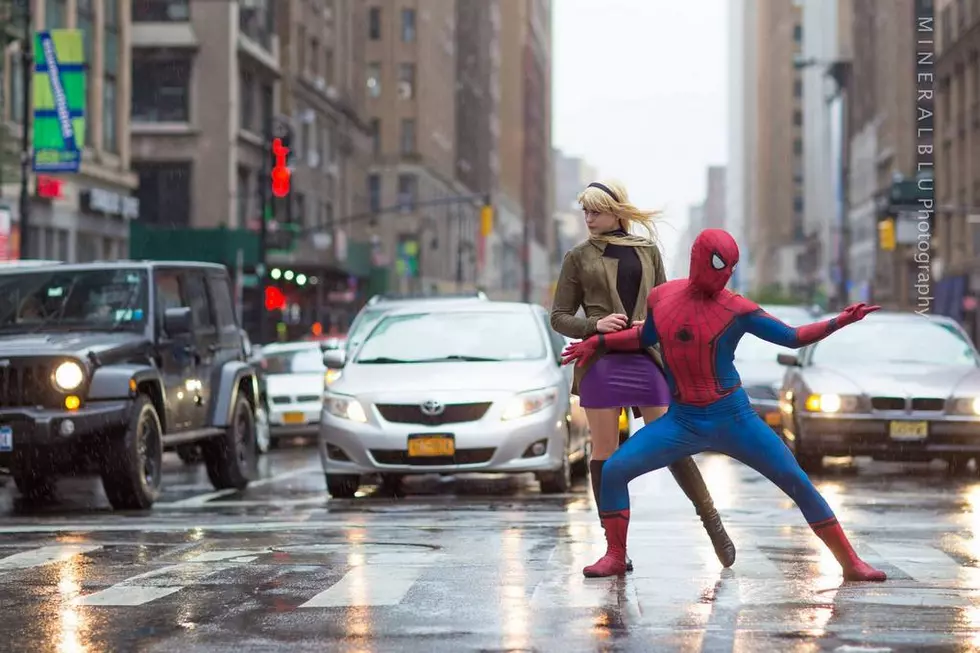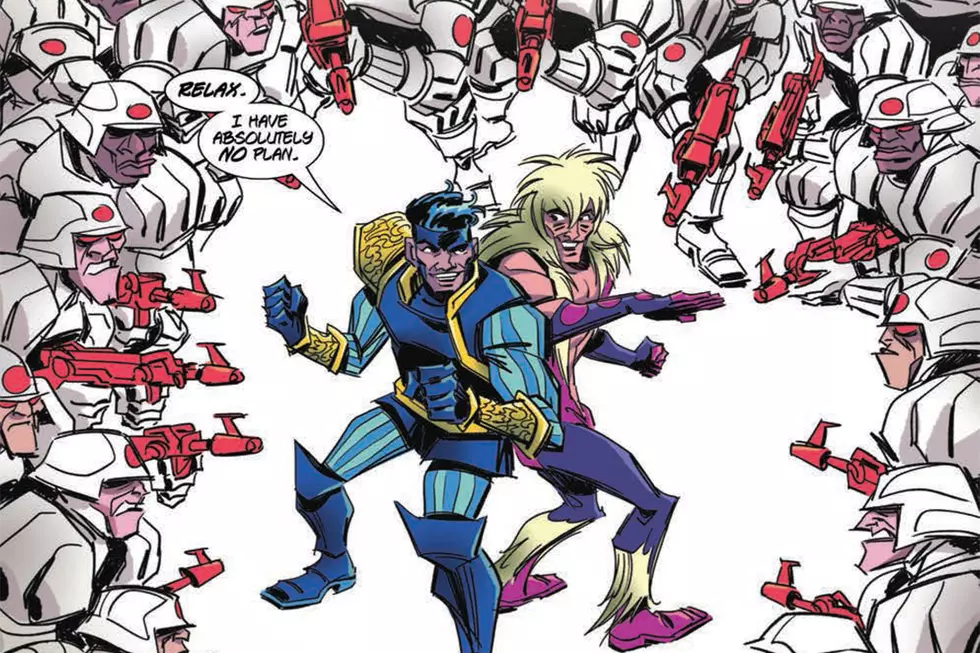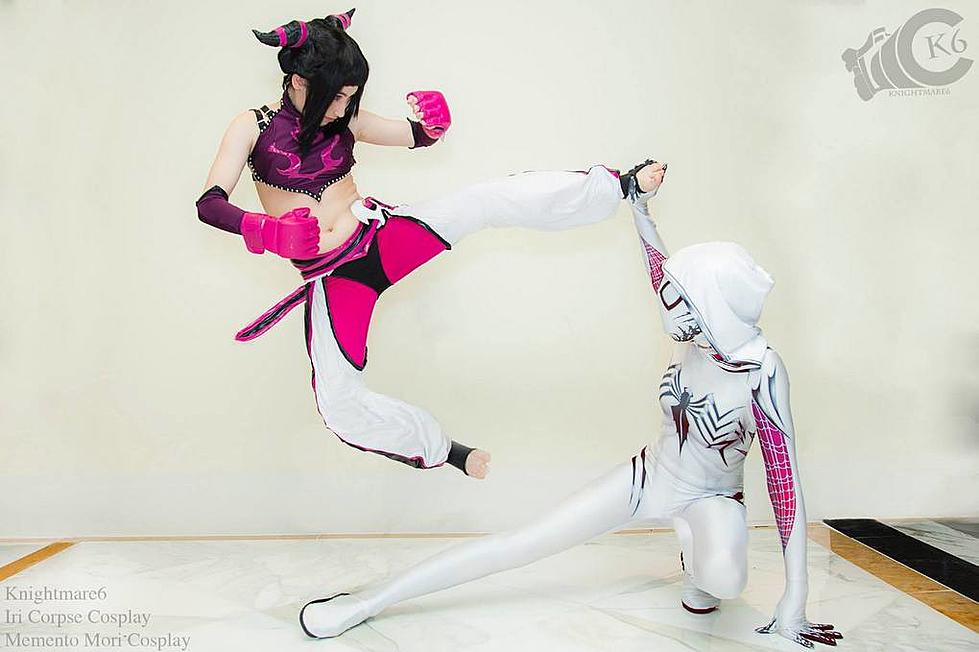
Revival, Reinvention, Resurrection: The Power Of Great Superhero Costume Design
We live in a time of awesome superhero costumes in comics. The rise and rise of cosplay culture, the emergence of comic artists with a savvy understanding of fashion, and the slow diversification that's making heroes palatable to a broader audience, have all contributed to a costuming culture with more to offer than capes and pants.
Superhero costumes have always been an asset to the industry, because iconography helps establish character and create a brand. But the value of costumes in reaching audiences and reinventing characters seems to be recognized now as never before, leading to the rise of artist-designers like Jamie McKelvie and Kris Anka, who don't even need to be on a particular book in order to be called in to make-over the characters. This is a great leap forward in understanding just what a good costume can do -- and the special skills required to do it.
EXHIBIT A: MOON KNIGHT
A great costume can give a character a whole new identity.
Moon Knight was a mess of a character before his 2014 revival in the hands of Warren Ellis, Declan Shalvey, and Jordie Bellaire. Contradictory efforts by multiple creative teams to find the character's core only served to layer junk upon junk. Moon Knight was meant to be complex; he became cluttered.
Ellis, Shalvey and Bellaire streamlined him down and gave him a clearly defined new role -- the hero who protects travellers at night -- and a new look; a natty white suit. Both elements helped pull Moon Knight out of the mire of Marvel's many failed faux-Batmen and make him his own man for the first time.
Moon Knight's new costume at once underlines his insanity -- his old white suit was never the sane way to fight crime, and now it's an actual white suit -- and exerts his outer calm, his cool lunar placidity. It gives him authority. It makes him scary. And it makes him the one superhero detective who dresses something like a detective, which feels like a statement of purpose.
The suit is not Moon Knight's only costume -- in their six issues, the creative team also showed us a crazy bone outfit for fighting the occult and a more traditional but still refreshed take on his old cape-and-cowl look. Both costumes look great and make perfect sense to the character -- these aren't Stealth Strike Scuba Assault Batman action figure costumes. But if there's any sense in the world, it's the white suit that will become Moon Knight's new default. It redefines him. It gives him a new place that is uniquely his own in a city of heroes.
Great costumes can offer just this sort of redemption. Shatterstar, a joke of a character with his mullet and opera cloak, was suddenly credible thanks to a redesign (and a fresh haircut) courtesy of Valentine De Landro and David Yardin. Jamie McKelvie's Captain Marvel design -- arguably the most obvious trigger for the current "golden age" of costumes -- was all about re-positioning Carol Danvers as one of Marvel's premier heroes. The tailored military look drew a line between her present-day "top gun" persona and the old, victimized, drunken Carol, who seemed to prefer editing magazines to flying planes.
EXHIBIT B: BATGIRL
A great costume can give a character a whole new audience.
It's hard to imagine that even Batman group editor Mark Doyle truly understood exactly what he was tapping into when he handed Batgirl over to the new creative team of Brenden Fletcher, Cameron Stewart and Babs Tarr, with Stewart and Tarr collaborating on the character's new look. I'm sure Doyle expected great things, but the torrent of fan-art that emerged in the 24-hours following the reveal of Batgirl's new costume was unprecedented. Such was the mania that cosplayers almost immediately bought out the world's supply of Drench Wellington yellow rubber Doc Marten boots.
What happened with Batgirl was the spark of a movement based in large part on a smart new costume that spoke to Barbara Gordon's character, intelligence, style, and place in life. This design looked less like a Batman cast-off, and more like something a young woman would make for herself to craft her own identity under the bat-cowl.
Sure, there were critics. Fans whose philosophy on everything from high-heeled shoes to strapless tops has always been, "it can't be impractical if she's wearing it" were suddenly in revolt at the idea of a leather jacket that hid the character's boobs. But the thrift-store style, the snap-on cape, the zips and buckles, were all character-first design elements, and that's how good costume design should work.
We don't yet know how this new look will translate to actual sales -- we might never know how well the book sells digitally, where much of its market is likely to reside -- but the sort of word-of-mouth and online interaction generated by this costume redesign is hugely valuable to a publisher.
A good costume gets an audience excited by telling them what to expect. Cliff Chiang's take on Wonder Woman played up her warrior strength and her status as both mythic figure and iconic hero. Jamie McKelvie's costume for the new Ms. Marvel respected her youth and heritage rather than pandering to a traditional crowd.
And it works in reverse. Harley Quinn's New 52 design clearly steered the character in a different direction from the ones fans expected, and sent a signal to readers as unambiguous as the one sent by Tarr and Stewart's Batgirl.
EXHIBIT C: SPIDER-GWEN
A great costume can make readers hungry for more.
Here's a statement I never thought I'd make: I want Marvel to bring Gwen Stacy back from the dead. And it's all because of a costume.
Marvel's upcoming Spider-Verse event brings together Spider-Men and Spider-Women from multiple alternative realities, including many that readers have seen before and a few new ones created for the event. Among them is a Gwen Stacy Spider-Woman, designed by Robbi Rodriguez -- and Spider-Gwen wears what I think may be my favorite superhero costume in years.
The Spider-Gwen costume does a lot of things with remarkable economy. It plays beautifully of the iconic design of the greatest superhero costume ever conceived, Steve Ditko's Spider-Man costume. It strikes a contemporary tone with the hood and the neon Chucks -- but with sufficient restraint that I don't think it will look dated in years to come. It creates shapes and breaks up space in a way that's going to look powerful on the page. And it immediately evokes character. I haven't even read Spider-Gwen's first Spider-Verse appearance, and I already have a sense of a tough, haunted, edgy young woman. I'll eat a pair of neon Chucks if that's not who she is.
Gwen Stacy is meant to stay dead. As grotesque as it is when women are killed off to further the stories of male heroes, the death of Gwen Stacy feels too important to Spider-Man's development to be undone. Yet I like this costume so much that, even before the Spider-Gwen issue of Edge of Spider-Verse comes out, I know I want Gwen back and kicking ass in this costume.
(I will settle for an ongoing set in Gwen's alt universe. Heck, if the Ultimate Universe scales back to just Miles Morales, a Miles book and a Gwen book would be perfect complements to each other. But I don't think that's where Marvel is heading.)
A great costume inspires stories -- and tells an audience what sort of stories to expect. Catwoman made a new kind of sense when redesigned by Darwyn Cooke in 2004 -- finally she wore the costume of a master thief, not an Olympic luge rider. It causes whiplash any time that costume appears in service to a story that doesn't respect the character. The shape-shifting Loki as a puckish young man in swashbuckling adventurer's attire -- yet another Jamie McKelvie design -- sparks very different stories to the sinewy old guy with the giant horns. Stuart Immonen's stylish All-New X-Men costumes place the time-tossed X-Men in the present day better than any amount of exposition.
Costumes have always been important to superheroes -- but perhaps more so than many editors realize. Some artists are great at it, and some are... less great. Like lettering, coloring, inking, editing, or cover art, it's a specialized job that perhaps ought to be reserved for those with the skill set to excel at it.
Thankfully the comic industry has never had such a wealth of designing talent. Jamie McKelvie, Kris Anka, Cameron Stewart, Robbi Rodriguez, Cliff Chiang, etc., are part of a generation of artists who take this job very seriously, and they make superhero comics smarter and sharper because of it.
And they're not alone. More and more artists are showing their designer flare and their grasp of contemporary style. Sites like Tumblr and DeviantArt provide fertile ground for artists to play around with costume concepts -- and the excellent Project: Rooftop curates some of the best examples. The musty superhero industry would benefit hugely from turning to the likes of Cory Walker, Mingjue Helen Chen, Dean Trippe, Corey Lewis, Becky Cloonan, Ming Doyle, Jemma Salume, Sean Murphy, Ron Wimberly, and many more, to re-energize the genre for tomorrow.
Designers assemble? A great costume can change superhero comics for the better.
More From ComicsAlliance


![Bond After Brexit: Kieron Gillen Declassifies ‘James Bond: Service’ [Interview]](http://townsquare.media/site/622/files/2017/03/Service_McKelvie-feat.jpeg?w=980&q=75)






